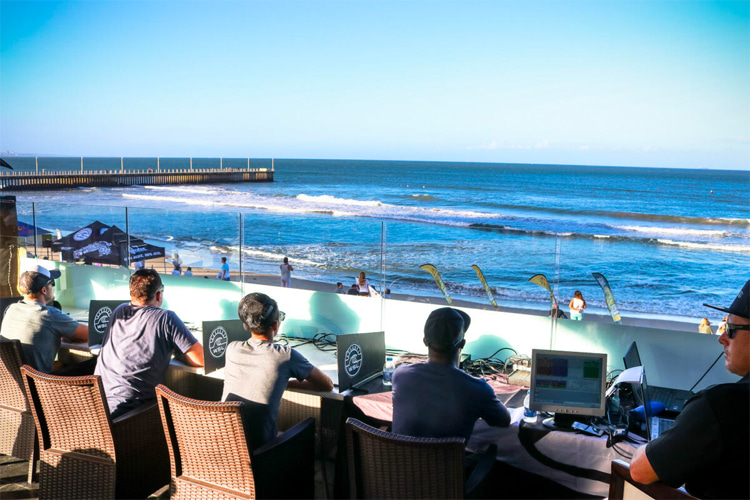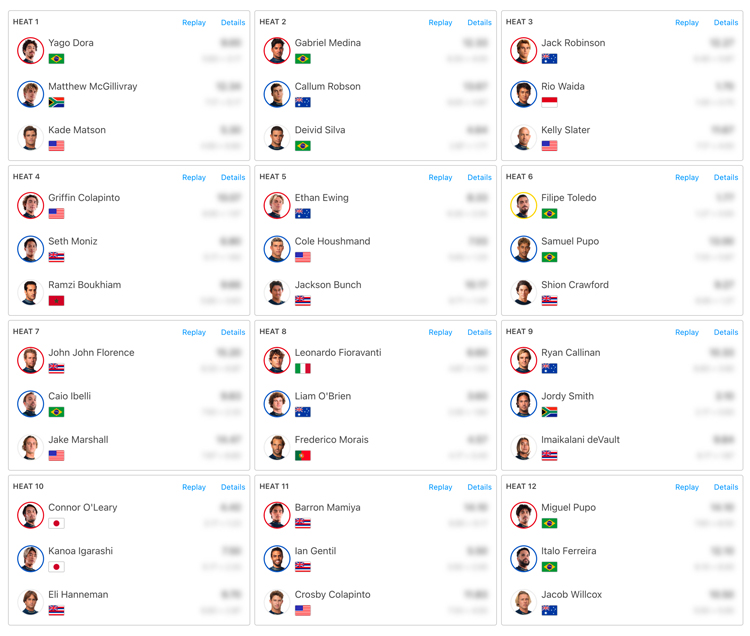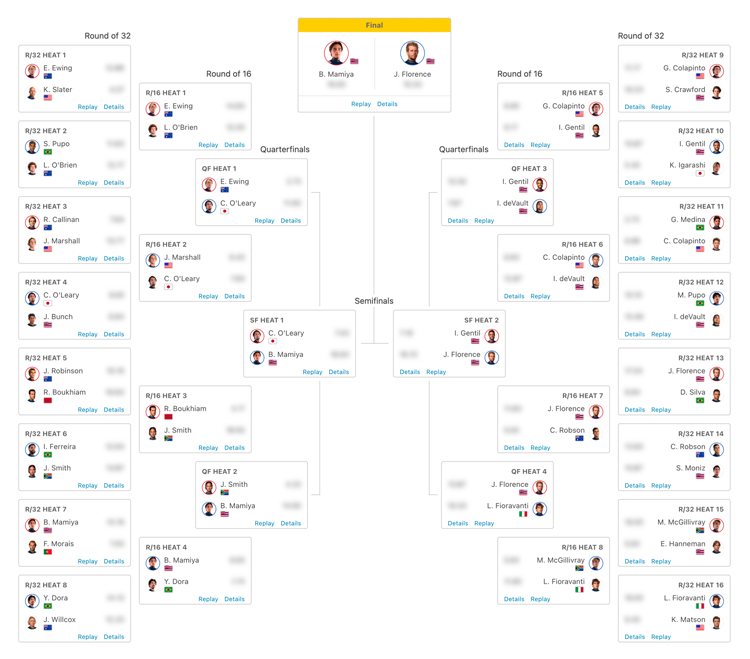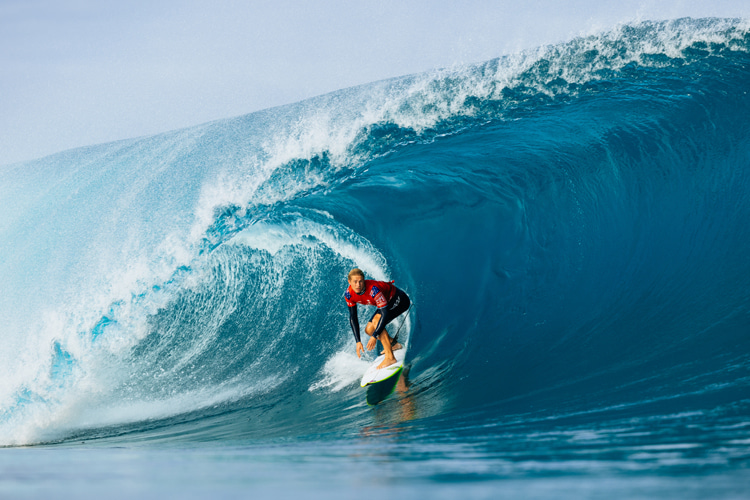How are surfers distributed in heats? Can two top-ranked athletes match up against each other in the opening round of a contest? Here's how seeding works in the Championship Tour (CT).
The World Surf League (WSL) introduced a new competition format in the 2019 CT.
The goal was to fine-tune an athlete's past achievements while simultaneously rewarding performance in a running season.
Seeding is the process of assigning a rank or position to a surfer based on their previous achievements or current performance.
Seeding aims to create a structured bracket or draw for the surf competitions, ensuring that higher-seeded athletes are initially paired against lower-seeded ones, theoretically providing a more balanced and competitive progression throughout the event.
In modern competitive professional surfing, each elite surf contest features the following stages:
- Seeding Round;
- Elimination Round;
- Round of 32;
- Round of 16;
- Quarterfinals;
- Semifinals;
- Final;

The Seeding Round
The Seeding Round (see image below) is the first competition heat and features 12 three-man man heats, i.e., 36 athletes.
The top two surfers from every heat progress directly to the Round of 32, whereas the surfer with the lowest placement in each heat moves on to the Elimination Round.
But what are the criteria for distributing surfers through the 12 heats?
Can two top surfers in the overall rankings meet in the inaugural stage? How do you set up a fair seeding?
For the seeding calculations, WSL designed a system with two variables:
- Base Seed Points;
- CT Seed Points;
The Base Seed Points apply to the previous season's CT athletes, the wildcards, and the replacements.
They are determined by WSL before the first CT event of the year and have a gap of 40,000 points between the world champion and the 34th-placed surfer.
The world champion gets 60,000 points; the last in the rankings gets 20,000 points.
The gap is determined by the precise percentage difference in rankings.
For instance, if the 2023 WSL world champion Filipe Toledo holds 60,000 points and Ethan Ewing lagged 19 percent behind him in the previous year's rankings, Ethan will start the 2024 season with 19 percent fewer seeding points than Filipe.
Therefore, the initial seeding reflects each surfer's performance from the preceding year.
Then, all surfers will have 25 percent of those initial Base Seed Points deducted from each of the first four CT events of the season.
As a result, Base Seed Points will be zero from the fifth CT contest onward.
The goal is to reward performance and allow lower-seeded surfers to get rid of their initial handicap, if you will.
CT Seed Points are the sum of the Base Seed Points plus the current CT rankings points earned in the regular season.

The Brackets Formula
How are surfers seeded into the inaugural round?
Before each event, WSL assigns seeding to the surfers within the range of 1 to 36.
Subsequently, these 36 individuals, including the wildcards, are distributed across four brackets.
The initial bracket encompasses seeds 1 to 4, the second bracket consists of seeds 5 to 12, the following bracket includes seeds 13 to 24, and the last one comprises seeds 25-36.
Consequently, a surfer is confined to movement solely within their designated bracket during the competition.
This seeding system allows wildcards and replacements to have a chance to not draw the top surfers again in Round 32, something that happened before 2019.
In the past, a wildcard who beat a top-ranked surfer would have to meet him again in the previously designated Round 3, current Round of 32.
With the new system, a wildcard that wins the Seeding Round will not be up against a top-four athlete in the Round of 32.
In other words, performance and results are rewarded.

First Surfs Against Last
It's important to note that in the opening round, the highest-ranked surfer is seeded with the lowest-ranked athlete plus wildcards, the second-placed surfer is matched against the penultimate-ranked surfer plus a replacement surfer, and so on.
Only the order of heats was reshuffled mainly to avoid overlapping heats with top-seeded surfers who eventually battle in separate heats for the world title.
In Round 32, the competition adopts a horizontal pyramid-style, two-men, single-elimination format in which the winner advances through to the next match-up and the loser is eliminated.
It's important to underline that the Brackets Stage (see image above), from the Round of 32 to the final, splits the leaderboard into two sides (Heats 1-8 and Heats 9-16), meaning that the winner of each side's heat only meets the winner of the other side's heat in the final.
According to WSL, professional surfing's seeding does not follow an automated algorithm. Instead, heat distribution and organization are supervised manually.
The competitive surfing seed formula is not perfect nor always fair, but that's virtually impossible because the weight of the variables at stake is subjective.
For instance, how do you weigh the importance of winning the Challenger Series (CS) against placing last in the top 22 CS rankings?
Who should be seeded above, a 10th-place finishing CT surfer or a runner-up CS campaigner?
